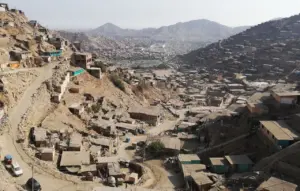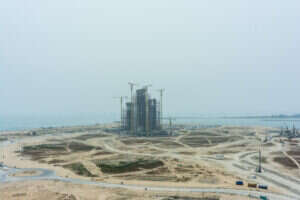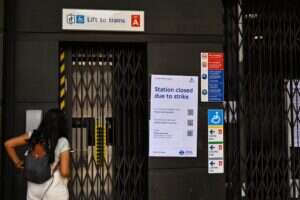Modern Paris has been defined by the Boulevard Périphérique: the multi-lane ring road that divides the city proper from the sprawling suburbs that surround it. Some 80 per cent of the metropolitan population don’t live in Paris at all.
The suburbs contrast with the picture postcard Paris most tourists visit. Take a trip north on the notorious Line D and you leave behind the sparkling lights of the city for areas that feel a whole lot darker. The banlieues might as well be a million miles away – in terms of their size, infrastructure, facilities, space and access. Some 13 percent of their residents live below the poverty line; 20 percent are in subsidized housing.
Many of the problems of these areas stems from their division into autonomous administrative entities, governed separately without the budget or prestige of the city itself. As a result, the peripherique has come to stand for the divide between inclusion or exclusion, for the huge a social and cultural gulf central Paris and the areas that surround it.
All that could soon change, however. In 2016, the French government will create Métropole du Grand Paris, a huge metropolitan authority encompassing both city and suburbs; the plan will see a tripling of the official population of Paris, as well as a range of other initiatives such as business hubs, new metro lines, and fast trains to the regions’ airports. Pierre Mansat, a deputy mayor who’s worked on the plan, has said that it will create “a new image of Paris as more inclusive, integrated, fluid”.
Whether this is the right solution will not be clear for many years, however. There is danger that, by focusing on transport links and employment opportunities, the authorities are focusing too much on economics, and not enough on other causes. Footage of the abuse received by journalist Zvika Klein as he walked the city’s streets for hours in a kippah, went viral earlier this year; social divisions are clearly at work, too.
All that said, claims by the likes of Fox News that Paris contains vast “no go zones” were at best over-simplistic. While there are areas that certainly do feel dubious at night, that’s true of any major city.
There are more affluent suburbs in the west, and in areas such as Versaille or Neuilly-sur-Seine; there are commuter areas, known as ville-dortoir, such as Juvisy-sur-Orge and Chevreuse. There are stunning parks and forests, too. Despite its negative connotations, the word banlieue can describe any suburb.
Nonetheless, the region’s problems will not be quickly solved, and solutions are less likely to come from high-profile spending sprees than by a longer effort to break down social and economic barriers. Only then will the suburbs be brought in from out of the cold.






